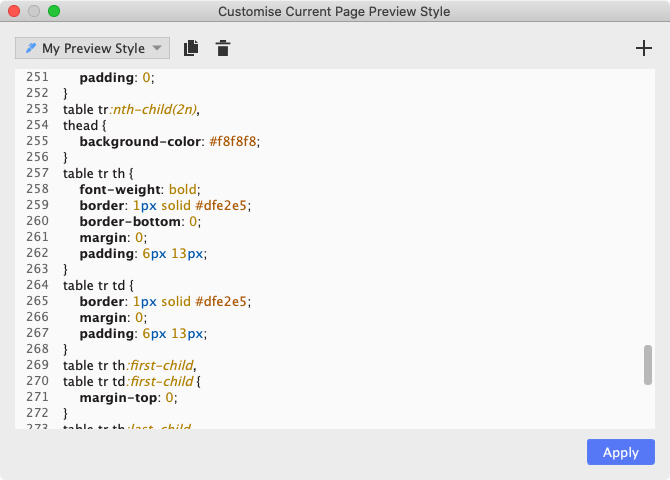

- #Asciidocfx change preview style how to#
- #Asciidocfx change preview style code#
- #Asciidocfx change preview style free#
- #Asciidocfx change preview style windows#
This is the IRI dataset, which is documented in the journal Marketing Science ( link to the pdf, link to the jounal website).
#Asciidocfx change preview style how to#
I do this for the goal of exploring this dataset visually (an interesting methodological question I find) – and maybe foremost, to learn how to work with big datasets in practice. Add yours in the comments if you wish, I’ll do my best to respond. See the bottom of the post for explanations on some questions. It will often look silly – that’s because I am not a programmer by training, and I make an effort at honestly recording the steps I took – including all mistakes and “doooohh!” moments. This is going to be an evolving blog post retracing my current attempt at dealing with a dataset of 65 gigabytes. Umigon already includes one: the detection of promoted discourse in tweets. Next steps: offer an API, and continue researching on the detection of other semantic features of interest. – which makes a distinction between bad sentiment (“I hate war” -> negative sentiment) and sad facts (“War in Syria” -> neutral sentiment). – a tool that works well even on text with awful syntax (tweets!) Works well with natural language (smileys, misspelled words, bad syntax)ĭistinguishes between negative facts and negative sentiments I compare these 3 solutions in terms of 4 features (the 2 columns on the right are the most crucial)
#Asciidocfx change preview style free#
There are already 2 outstanding free solutions for sentiment analysis out there, so you might wonder why Umigon was worth the effort.

Umigon is a free tool for sentiment analysis on Twitter. – Get in touch on Twitter! special call for sponsorships This course could use the help of sponsors to make it as awesome as possible.

So that we see every entrepreneur able to launch their own apps.
#Asciidocfx change preview style windows#
The objective of this MOOC is to take participants from a very basic starting point (no coding skills) to the creation of their own functional, native app available in Android, Apple and Windows Phone versions, and this in just 30 hours and for free. I am really excited to create a MOOC teaching anyone how to create mobile apps for Android, iOS and Windows Phone. It can be done: Towards a MOOC “Creating mobile apps” for entrepreneurs No yearly subscription to pay, no fee if the app is made for commercial use… Like, supra easy to create.Ģ) the app should be fantastic: not a web page packaged as a fake app, but a real app with access to all functionalities of the phone that it needs (camera, GPS, contacts…)ģ) the app should be available on the Playstore (for Android), the App Store (for Apple), and Windows Phone’s Store.Ĥ) and the tool to create the app should be free if possible. Tons of excellent projects are abandoned or drag on forever because apps never materialize.īut what if apps could be created by everyone? Let’s dream a bitġ) everyone invited: not just those who already know how to code.
#Asciidocfx change preview style code#
Nobody in the room, really, knows how to create an app. There is this hope that maybe, a geek friend from an engineering school will give a hand to code the app… or there is also the hope to convince a banker or a business angel to finance the prototype of an app… In practice, this almost never happens. “So, our idea is to create an app, what it does is…”īut nobody in the team knows how to code an app. Listening to the pitches of the teams, I noticed something. Startup weekends, startup challenges, boosters, incubators, startup creation projects… I visit and sometimes participate in these events. In my school and in Lyon, the city where I live, everyone is helped in starting their entrepreneurial projects.


 0 kommentar(er)
0 kommentar(er)
